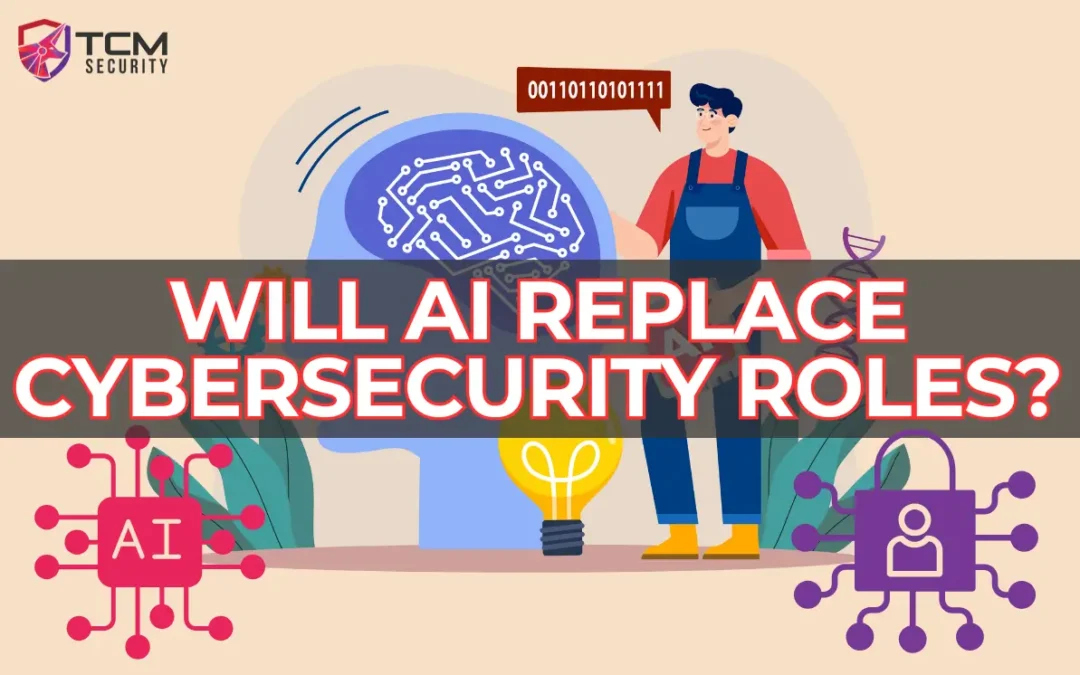Artificial Intelligence (AI) is transforming many aspects of cybersecurity, from automated pentesting to AI-driven monitoring in Security Operations Centers (SOCs). So now we need to consider the critical question: Will AI replace technical cybersecurity professionals or simply enhance their capabilities?
Today, we will explore how AI is currently used in various cybersecurity roles—penetration testing, application security (AppSec), blue team/SOC operations, and security engineering—and analyze the future of these roles. We’ll also discuss specific AI tools and technologies in each role, examine if AI will replace or support them, and highlight the risks and limitations of over-reliance on AI.
Watch a video version of this article below:
AI in Penetration Testing
AI is increasingly being employed in penetration testing to automate routine tasks and augment human testers. Modern AI-powered platforms can perform tasks like vulnerability scanning, network mapping, and even basic exploit generation. For example, autonomous penetration testing tools continuously scan targets for weaknesses and attempt exploits automatically, helping identify vulnerabilities at scale. AI can also assist with Open-Source Intelligence (OSINT). These capabilities speed up portions of the penetration testing process and cover more ground than we otherwise would manually.
Currently, the main areas of focus for AI tools in Penetration Testing are:
- Automated Penetration Testing Platforms: Continuous penetration testing against a target, simulating attacks, and finding exploitable paths.
- AI-Augmented Vulnerability Scanners: Traditional scanners (e.g., for web vulnerabilities or network ports) are being enhanced with machine learning to improve detection rates and reduce false positives.
- AI for Social Engineering Simulations: Pentesters also leverage AI to craft more convincing phishing emails and social engineering campaigns at a faster rate.
Will AI Replace Pentesters?
Unlikely. Whilst AI can automate many monotonous tasks, it lacks some of the qualities that define an expert pentester. Penetration testers excel at creative thinking, understanding logic and context, and adapting on the fly—all of these are areas where AI currently falls short.
“AI is not a replacement for skilled cybersecurity professionals, but a force multiplier.”
In practice, this means AI tools can handle mundane or repeatable tasks (e.g., scanning and initial enumeration), freeing up pentesters to focus on analysis of the target, chaining exploits, and more nuanced attack scenarios. Automation also lowers the barrier to entry for junior testers, enabling them to perform more comprehensive testing with AI assistance. However, often, a seasoned professional is still needed to interpret results, carry out more complex attacks, decide if paths are even worth following, and generally make judgment calls during engagements. In short, AI enhances pentesting capabilities but currently does not eliminate the need for skilled humans.
AI in Application Security (AppSec)
In application security, AI is impacting how we find and fix vulnerabilities. Traditional Static Application Security Testing (SAST) relies on manually written rules and patterns, which can lead to false positives or missed issues. AI-enhanced tools now integrate machine learning to help analyze source code for flaws. It can also learn from large codebases and known vulnerabilities to detect insecure coding patterns with greater accuracy. This can result in wider coverage and improved precision in identifying issues.
Specific Tools and Technologies:
- AI-Powered Code Scanning: These tools can scan codebases far quicker than a human and pinpoint vulnerabilities that rule-based scanners might miss. Theoretically, they also get smarter over time; as the AI learns from new vulnerabilities, it can identify similar patterns in the future. Overall, this allows humans more time to spend doing code review on critical areas of the codebase where it really matters or carrying out other tasks.
- Vulnerability Prioritization: When you first scan a codebase, even a relatively small one, it’s likely you’ll end up with hundreds or even thousands of findings. Therefore, in a large application, prioritization is key. AI can help us assess each vulnerability’s severity, exploitability, and impact to highlight what needs fixing first.
- Code Review and Fixes: Some emerging tools can suggest fixes. AI code assistants can recommend secure coding improvements or suggest a fix once a vulnerability is identified. This merges into the development workflow, enabling quicker remediation.
The impact of AI in AppSec has been mostly in terms of speed and accuracy. AI-driven security tools can analyze huge volumes of code in a fraction of the time it takes us to do code review, catching issues earlier in the development lifecycle, therefore reducing the cost to fix. AI tools are also claimed to produce fewer false positives than more traditional scanners too, however, I currently have no data to back up this claim. Overall, this means app sec teams spend less time chasing non-issues and more time on real bugs.
Similar to Pentesters, AppSec engineers aren’t on the way out despite these advances. Engineers and analysts are still needed to tune AI tools, interpret findings, and make high-level decisions. AI might tell you what part of the code is problematic, but human developers and security engineers still decide how to fix it in a way that balances functionality, performance, and security. As we’ve seen, AI acts as a smart assistant, catching common mistakes automatically so that we can concentrate on deeper architectural security issues, context-dependent bugs, and more innovative threat scenarios given the application’s wider context.
AI in Blue Team & SOC Operations
Blue team defenders and Security Operations Centers are often drowning with alerts and data. Here, AI has become increasingly important in sifting through noise to detect real threats faster.
AI-Powered SIEM and Anomaly Detection:
Traditional Security Information and Event Management (SIEM) systems aggregate logs and flag known threat signatures. AI enhances this by applying machine learning to identify patterns and anomalies across data sources. For example, an AI-based SIEM can learn what “normal” network activity looks like for a given organization (establishing a baseline of behavior), and then continuously monitor for deviations that might indicate an intrusion. This means that instead of relying solely on known attack signatures or patterns, the system can catch subtle signs of an attack – like unusual login times, atypical data access patterns, or odd sequences of system calls – even if those patterns were never seen before. The result is more proactive threat detection, uncovering potential attacks that signature-based tools might miss.
User and Entity Behavior Analytics (UEBA):
AI is at the core of UEBA systems, which track normal user behavior and raise alerts on anomalies. For instance, if an employee’s account suddenly starts downloading gigabytes of data at 3 AM or accessing systems they’ve never touched before, AI-driven behavior analytics will flag it as suspicious. These tools help detect insider threats or account takeovers by looking for deviations in behavior that humans might overlook in a sea of logs.
Threat Intelligence Analysis:
SOC teams rely on threat intelligence feeds (information about new vulnerabilities, tactics used by attackers, indicators of compromise, etc.). AI can help automate the ingestion and analysis of threat intel. For example, Natural Language Processing (NLP) algorithms scan vast amounts of open-source data (e.g. forums, social media, research reports) to extract relevant indicators and warnings. These systems can also quickly correlate emerging indicators with an organization’s environment to see if there’s any sign of those indicators internally.
Incident Response and SOAR Automation:
When an alert triggers, sometimes time is of the essence. AI can be used in Security Orchestration, Automation, and Response (SOAR) tools to take immediate actions on certain alerts. For example, if AI determines with high confidence that an alert is a known malware infection, it might automatically isolate that host from the network or block a malicious IP address.
Analysts with AI-powered tools can handle much more than they could manually. This is because AI can filter out noise and help highlight the most important alerts. However, once again, this does not mean that tier-1 analysts or threat hunters are obsolete; it simply changes their workflow. They spend less time on tedious log analysis and more time investigating actual incidents, refining detection rules, and hunting for threats. When using AI-powered tools, especially initially, human oversight is important – analysts need to verify findings (to catch and reduce false positives) and provide the context that AI lacks.
Will AI Replace Cybersecurity Professionals or Enhance Them?
Given AI’s growing capabilities, it’s natural to ask if AI will eventually replace roles like pentesters, AppSec engineers, or SOC analysts. The general consensus in the industry is that AI will enhance these professionals, not fully replace them. AI shines at tasks that involve high-volume data processing, pattern recognition, and speed. It can brute-force through data and events, look for known patterns 24/7, and even adapt to new data over time. This makes it ideal for automating things like mass scanning, reviewing endless logs for anomalies, or testing larger applications for known vulnerabilities. By offloading these duties to AI, security professionals are free to do the creative, strategic, and critical thinking parts of security.
AI currently lacks the intuition, context understanding, and creativity that experts bring to cybersecurity. Analysts and engineers can understand the business context of assets (e.g. knowing which systems are critical) and investigate ambiguous situations where a judgment call is needed. Attackers also frequently use social engineering, deceiving people rather than machines – recognizing and responding to this requires human insight. AI systems also have limitations in dealing with the unknown. Many AI models in cybersecurity learn from historical attack data; they can struggle with completely novel threats or tactics they haven’t seen before. AI might also flag something unusual, but it can’t always explain why it’s dangerous in business terms – and once again, that’s where a human analyst interprets the finding and assesses the real risk.
Rather than eliminating jobs, the rise of AI in cybersecurity is shifting the nature of jobs and potentially introducing new ones. The focus for some may be moving from performing many manual tasks to a more strategic oversight, tooling management, and high-level analysis role, whilst others will still continue with deep analysis but on a smaller, more refined scope where their skills can have maximum impact. Cybersecurity professionals are increasingly needed to train, tune, and supervise AI systems and to handle the complex incidents or bugs that AI flags. As AI takes on more baseline work, new roles may emerge that specifically aim to bridge AI technology with security practices. This evolution can actually make cybersecurity careers more interesting – less time on drudgery and more on impactful decision-making and creative problem-solving.
Risks and Limitations of AI in Cybersecurity
The biggest risk we have currently is over-reliance on AI. It’s easy to see the output of a tool and be impressed without benchmarking or real-world testing and comparison. So, whilst AI offers numerous benefits, it also introduces risks and limitations that must be managed.
- False Positives: AI systems just like traditional ones are prone to flag benign activity as malicious. An anomaly-detection system might raise an alert for perfectly legitimate behavior that just happens to be rare.
- False Negatives: Missing real threats. If an AI is trained on incomplete data or if attackers intentionally behave in ways that appear normal, the AI may fail to catch the attack. It’s also worth considering that if you introduce a tool to create a baseline of behavior in your network that has already been compromised, it may not operate as expected.
- Need for Human Oversight: Most agree that human oversight of AI in cybersecurity is essential. AI might make a recommendation – like isolating a server it believes is compromised – but a human should verify critical actions to avoid disruptions from errors made by the AI.
- Biases and Transparency: AI models can sometimes be “black boxes,” meaning it’s not obvious why they flagged something. This lack of transparency can be problematic in security, where analysts need to explain incidents and decisions. Furthermore, models can be biased based on their training data – they might suit certain environments but not others.
AI is not a silver bullet; it’s one more set of capabilities.
Wrapping Up
AI is undeniably changing the cybersecurity landscape. It’s automating tasks that once consumed countless hours, potentially uncovering threats that we might miss and responding quickly to contain incidents. Rather than viewing AI as a threat to cybersecurity jobs, it should be seen as a powerful tool that makes those jobs more effective. Organizations that leverage AI in appropriate ways alongside skilled professionals will likely have a strong advantage. Cybersecurity practitioners who embrace AI will find that it enhances their capabilities, enabling them to secure systems or carry out their duties more efficiently.
Instead of replacing jobs, it’s likely that AI will make human expertise even more critical, ensuring that AI’s outputs translate into real-world security outcomes and provide value to the organisation. The real key is to find balance between tools and expertise.
If you are looking to gain some expertise, check out our Practical SOC Analyst Associate (PSAA) for blue team methodology and hands-on skill development or the Practical Network Pentest Professional (PNPT) for advanced red team techniques. See our other practical, skill-based certifications for other specialized training to help achieve and maintain ahead-of-the-AI-curve skills and thought processes.

About the Author: Alex Olsen
Alex is a Web Application Security specialist with experience working across multiple sectors, from single-developer applications all the way up to enterprise web apps with tens of millions of users. He enjoys building applications almost as much as breaking them and has spent many years supporting the shift-left movement by teaching developers, infrastructure engineers, architects, and anyone who would listen about cybersecurity. He created many of the web hacking courses in TCM Security Academy, as well as the PWPA and PWPP certifications.
Alex holds a Master’s Degree in Computing, as well as the PNPT, CEH, and OSCP certifications.
About TCM Security
TCM Security is a veteran-owned, cybersecurity services and education company founded in Charlotte, NC. Our services division has the mission of protecting people, sensitive data, and systems. With decades of combined experience, thousands of hours of practice, and core values from our time in service, we use our skill set to secure your environment. The TCM Security Academy is an educational platform dedicated to providing affordable, top-notch cybersecurity training to our individual students and corporate clients including both self-paced and instructor-led online courses as well as custom training solutions. We also provide several vendor-agnostic, practical hands-on certification exams to ensure proven job-ready skills to prospective employers.
Pentest Services: https://tcm-sec.com/our-services/
Follow Us: Email List | LinkedIn | YouTube | Twitter | Facebook | Instagram | TikTok
Contact Us: [email protected]
See How We Can Secure Your Assets
Let’s talk about how TCM Security can solve your cybersecurity needs. Give us a call, send us an e-mail, or fill out the contact form below to get started.

